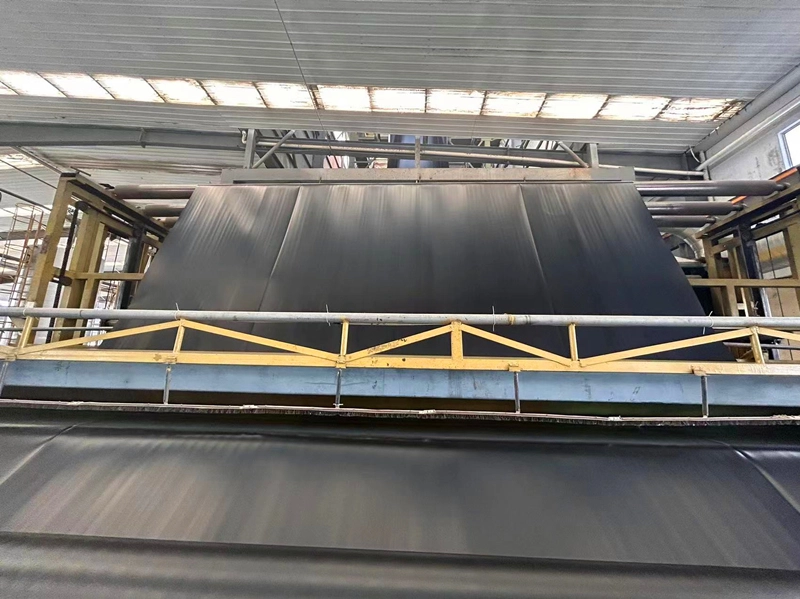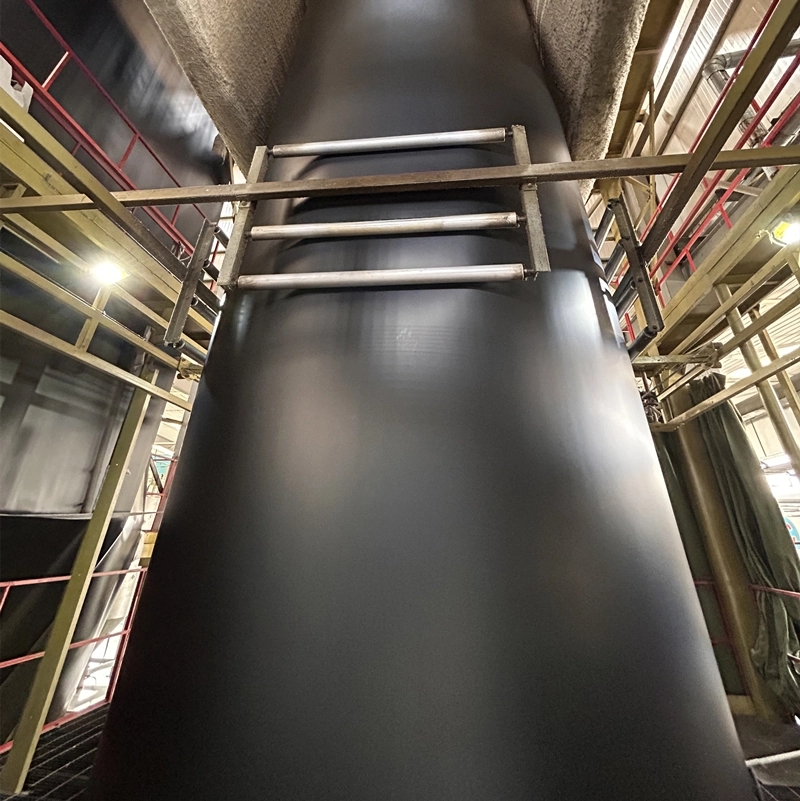PVC geomembrane: an important material for environmental protection projects
PVC geomembrane, or polyvinyl chloride mulch, is a synthetic material made of polyvinyl chloride resin. It has excellent anti-penetration properties and chemical stability and is widely used in various projects.
PVC geomembrane history
PVC geomembrane is a material used in civil engineering, water conservancy engineering, environmental engineering and other fields. It is widely used in waterproofing, anti-seepage, anti-corrosion and other aspects. Its history dates back to the mid-20th century.
In the 1950s, PVC (polyvinyl chloride) began to attract attention in the engineering field as a new material. Its excellent weather resistance, corrosion resistance and flexibility make it a strong competitor as a geomembrane material.
With the improvement of environmental protection and engineering quality requirements, the application of PVC geomembrane in waterproofing, anti-seepage and other fields has gradually increased. It is widely used in anti-seepage treatment of reservoirs, dams, channels and other projects in water conservancy projects, as well as waterproofing treatment of underground reservoirs, subway tunnels and other projects.
With the continuous improvement of manufacturing processes and material technology, the quality and performance of PVC geomembrane have been further improved, making its application in engineering more extensive and reliable.
PVC geomembrane Features and Benefits
Excellent anti-penetration performance: PVC geomembrane has good waterproof performance, which can effectively prevent the penetration of water, pollutants and chemical substances, and protect groundwater resources from pollution.
Strong weather resistance: PVC geomembrane has good weather resistance, can maintain stability under various environmental conditions, and is not easily affected by factors such as ultraviolet rays, oxidation, acid and alkali.
Good flexibility: PVC geomembrane has good flexibility and ductility, wide adaptability, and can be bent, folded, stretched and other processing operations according to project needs.
Easy construction: PVC geomembrane is light in weight and easy to install. It can be fixed to the base material by thermal welding, chemical bonding, etc. It has high construction efficiency and saves manpower and time costs.

PVC geomembrane Application areas
Water conservancy projects: PVC geomembranes are widely used in water conservancy projects such as reservoirs, canals, rivers, and reservoirs as an anti-seepage layer to prevent the waste of water resources and soil erosion.
Environmental engineering: PVC geomembrane is used in environmental projects such as landfills and sewage treatment plants as an anti-seepage layer to prevent waste and sewage from polluting groundwater.
Traffic engineering: PVC geomembrane is used in traffic projects such as highways and railways as a waterproof and anti-penetration layer to protect the basic soil and extend the service life of the road surface.
PVC geomembrane Environmental protection and sustainable development
As an environmentally friendly material, PVC geomembrane has the potential and advantages of sustainable development. The raw materials used in its production process can be recycled, reducing resource waste; and during use, it can effectively prevent the waste of water resources and soil erosion, and protect the environment.

PVC geomembrane Development trends
With the improvement of environmental awareness and technological advancement, PVC geomembrane will play an increasingly important role in engineering applications. In the future, with the continuous improvement of material performance and cost reduction, PVC geomembrane is expected to be applied in more fields and make greater contributions to environmental protection projects and sustainable development.
Standard and Specification
ASTM D7176 - Standard Specification for Non-Reinforced Polyvinyl Chloride (PVC) Geomembranes Used in Buried Applications: This standard specifies the requirements for non-reinforced PVC geomembranes used in buried applications. It covers material properties, dimensions, tolerances, testing methods, and marking requirements.
GRI GM-13 (gm13.pdf) - Standard Specification for PVC Geomembranes: Issued by the Geosynthetic Institute, this standard provides detailed specifications for PVC geomembranes, including thickness, tensile properties, tear resistance, seam strength, and dimensional stability.
ISO 10318 - Geosynthetics - Identification of Polymeric and Other Organic-Containing Products in Polyethylene and PVC: This standard outlines methods for identifying polymeric and other organic-containing products, including PVC geomembranes, based on their chemical composition.
Thickness: Typically ranges from 0.5 mm to 3.0 mm, depending on the application requirements.
Tensile Strength: Typically greater than 10 MPa, with variations based on the specific grade and manufacturer.
Tear Resistance: Generally greater than 50 N/mm, but can vary depending on the thickness and formulation of the PVC geomembrane.
Seam Strength: Seam strength requirements vary depending on the welding method used, but typically exceed 70% of the tensile strength of the geomembrane material.
Dimensional Stability: PVC geomembranes should exhibit minimal dimensional changes under various environmental conditions, such as temperature fluctuations and exposure to chemicals.
These standards and parameters ensure that PVC geomembranes meet the necessary quality and performance criteria for their intended applications.
In general, PVC geomembrane, as a high-quality geosynthetic material, has broad application prospects and important social significance, and will play an important role in environmental protection projects.
We specialize in supplying PVC geomembranes to customers worldwide. Our products are manufactured to the highest standards, ensuring superior quality and reliability for a wide range of applications. Contact us today to discuss your PVC geomembrane needs.
![]() 0.75 Double-sided smooth HDPE geomembrane.pdf
0.75 Double-sided smooth HDPE geomembrane.pdf
![]() 1 Double-sided smooth HDPE geomembrane.pdf
1 Double-sided smooth HDPE geomembrane.pdf

897.webp)
942.webp)
237.webp)